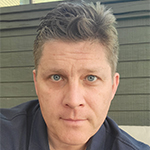When you invest time on the front-end of your development efforts, you will reap dividends during its latter stages. Conversely, if you don’t heed the details – political landscape, concerns of residents, requirements of regulatory agencies and more – then you will pay in stalled or stymied projects.
In vivid detail, panelists at NAIOP’s CRE.Converge this week illustrated those contrasting outcomes in a session moderated by Jill Didier, vice president of business development of Miron Construction Co – and also the former mayor of Wauwatosa, Wisconsin, a community west of Milwaukee.
Her varied background is fitting for the topic at a time of rising complexity in land development, new regulations, fewer municipal employees, and the COVID-19 pandemic combining to create longer delays in permit and entitlements processes; it’s vital to understand the development process from myriad vantage points. Someone who can put themselves in others’ shoes is that much more likely to have a smoother path to seeing developments take shape and bolstering the region’s economic well-being.
Ciere Boatright, CRG’s vice president of real estate and community development, shared insights gathered during her tenure with Chicago Neighborhood Initiatives (CNI), which focuses on revitalizing low-to-moderate-income neighborhoods. She emphasized the need for authentic engagement, calling it “probably the most crucial component” of a project.
For Pullman Park, the 180-acre mixed use development in the Pullman neighborhood on Chicago’s far south side, that engagement took the form of 60 community meetings. The project met with pushback, noted Mariah DiGrino, a partner with global law firm DLA Piper, over having the city’s first Walmart as part of the development. There was considerable ire over the business giant’s labor practice history, but because of the engagement that had already spurred on buy-in among residents, elected leaders and others, Pullman Park moved forward.
The development has resulted in $450 million in new investment and 1,500 new permanent jobs, and is credited with having reduced crime and increased household incomes and property values in the area.
According to Jason Peters, administrator for the Village and Town of Somers, Wisconsin, it’s never too early to get a holistic view of the perspective of elected officials, community groups and neighbors, among other stakeholders. At the same time, he cautioned against assigning too much weight to assurances from a board member of alderperson, who frequently are not as well versed in the dynamics of a situation as a government staff member.
“Take that [elected official’s perspective] with a grain of salt,” said Peters. “That particular person might really want that project, for whatever reason, but doesn’t quite understand the dynamics of the neighborhood that that might affect.” He recommended reaching out to a staff member first, then finding a “champion on the board.”
“Meet with those people early and often because you don’t want to have those [difficult] discussions during your board meetings,” Peters added.
Monitoring social media and other communication platforms is also important, panelists agreed, as is reaching out to critics. “A lot of times they just want to be part of the process,” said Peters.
Other times, noted Matt Moroney, president and COO of Wangard Partners, you can issue talking points to a key individual, such as the mayor, to help address any opposition before it escalates.
Even when you don’t see eye-to-eye with a person or group on an issue, being able to state that you have heard them out and are striving to be responsive to their concerns is significant, said Boatright –helping to make the glass “half full” on that count.
Moroney, whose previous roles included serving as deputy chief of staff for former Wisconsin Governor Scott Walker, helped shepherd a redevelopment dubbed Olympia Field in Oconomowoc, Wisconsin. One key element was obtaining a parcel by eminent domain, which the local city council indicated was “never going to happen,” recalled Moroney.
In meetings with council members, two at a time, along with staff, Moroney and his colleagues learned about their goals, while also using the interactions to inform them about the opportunities that the project represented, such as raising tax revenue. More broadly, communication flowed almost daily between Wangard and various stakeholders.
“It’s a team mentality,” said Moroney. “It’s truly listening first to what the community wants and kind of designing the project around it.”
Among the topics covered was “aldermanic prerogative.” Speaking from her experience in Chicago and its 50 wards, DiGrino said that the practice – wherein an alderperson has a nearly absolute say in determining whether a project is located within their ward – is “a system of deference…an outgrowth of representative democracy.”
Aldermanic prerogative enables a developer to gain a high level of certainty around plans. By contrast, at-large legislative bodies – like those that predominate in the suburbs – are highly unpredictable. But even aldermanic prerogative has its limits, so it’s key to empower an alderperson to take a particular stance by generating a groundswell of support, said DiGrino. That kind of foundation-building tilled the soil for the Pullman Park development, she added.
Being proactive also pays off for developers who acknowledge problems that arise, rather than ignore or try to hide those problems, said Moroney.
Another piece of advice from DiGrino: “Agree to a process as opposed to the outcome,” which, as projects take shape, enables flexibility such as the number of local residents who might be employed by companies that are part of a development.
Access The Development Approvals Index: A New Tool to Evaluate Local Approvals Processes from the NAIOP Research Foundation.

This post is brought to you by JLL, the social media and conference blog sponsor of NAIOP’s CRE.Converge 2022. Learn more about JLL at www.us.jll.com or www.jll.ca.








